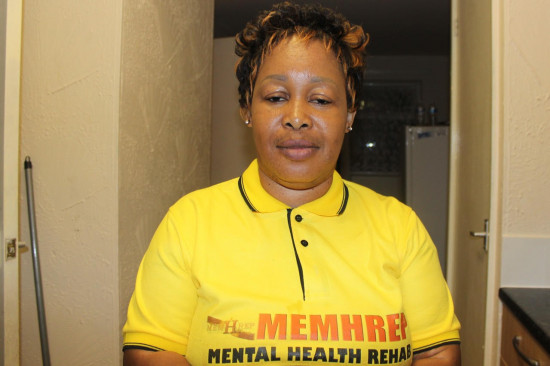People who suffer from Mental illness are widespread across the world. About 25 percent of the
world's population have this diagnosis, but there are immense debates about mental illness, the
causes, and the required steps leading to the total healing. People who are suffering from this
kind of illness sometimes encounter difficulties in either their thinking abilities, their
emotions or activities. These at times could lead to the destruction of the efficiency,
relationships and quality of life of these people. The outcomes of this illness have mostly been
unbearable for the family and friends, as well as the patients.
.jpeg)


People who are looked down upon in their everyday life, as a result of suffering from mental
illness, are uncountable. This is because, mental illnesses are some of the least meaningful
situation in the society.
However, unlike the images often found in articles, books, on television and in films, most people
can lead generative and efficient lives when given good treatment and assistance. Drugs and medical
treatments are good for some people, but this is not always the cure. Medical treatment may play a
part in the recovery process, and not necessarily the main part.


.jpeg)
The diagnosis of Mental Illness - How?
There are different classes or diagnosis of mental distress according to Psychiatrists. A doctor is able to measure what treatment is needed and also to determine the outcome when he or she makes a diagnosis. It can also be an alleviation to a suffering person to be able to put a name to what is wrong.



However, there are limits to diagnosis. A person's experience of mental suffering is different from the other and it can be misinterpreted, especially if there are cultural, social or religious differences between doctor and patient. Each patient has different diagnosis by different doctors. If we just concentrate on the symtoms, we will not take the necessary notice of what the sufferer might be experiencing. The medical diagnosis might be unable to justify the sufferer’s full experience.



Diagnosis can be very damaging if it becomes a label. For example, instead of being seen as a parent, writer, mechanic or student who has schizophrenia, a person may be seen as 'a schizophrenic', as though this diagnosis summed them up. It's necessary to retrieve that a diagnosis does not have to determine the whole course of life, and may come to be a fairly minor part of an individual's identity or history. Mental distress is possible to totally recover and this has been the case for many people. Sometimes, they even recover from the suffering feeling stronger and wiser. Others get over the worst, but remain vulnerable, and relapse from time to time. Some don't recover, and will continue to receive treatment in the long term.
Types of mental distress:
There are many types of Mental distress. In everyday life, we sometimes use words to diagnose them, for example, 'depression' or 'anxiety'. This can make them seem easier to understand, but their closeness can mean underestimating just how intense and incapacitating these conditions may be. The following are some of the most commonly diagnosed types of mental distress:
Depression:
Depression is more than simply feeling unhappy or fed up for a few days. All most everyone occasionally go through spells of feeling down, but when one is depressed, there persistent feeling of sadness for weeks or months rather than just a few days. Some people still think that depression is trivial and not a genuine health condition. They're wrong. Depression is a real illness with real symptoms, and it's not a sign of weakness or something one can 'snap out of' by 'pulling yourself together'. The good news is that with the right treatment and support, most people can make a full recovery from depression. Depression affects people in many different ways and can cause a wide variety of symptoms. They range from lasting feelings of sadness and hopelessness to losing interest in the things individual used to enjoy and feeling very tearful or anxious. There can be physical symptoms too such as feeling constantly tired, sleeping badly, having no appetite or sex drive and complaining of various aches and pains. The severity of the symptoms can vary. At its mildest, an individual may simply feel persistently low in spirit, while at its most severe, depression can make one feel suicidal and that life is no longer worth living. Depression often goes alongside with anxiety.
Anxiety:
Anxiety can refer to an invariable and unrealistic worry or fear, about any aspect of everyday life that can be mild or severe. Everyone experiences feelings of anxiety at some point in their life. For example, an individual may feel worried and anxious about sitting an exam or having a medical test or job interview. Feeling anxious is sometimes perfectly normal. However, people with generalised anxiety disorder (GAD) find it hard to control their worries. Their feelings of anxiety are more constant and often affect their daily life. GAD is a long-term condition which causes you to feel anxious about a wide range of situations and issues, rather than one specific event. People with GAD feel anxious most days and often struggle to remember the last time they felt relaxed. GAD can cause both psychological (mental) and physical symptoms. These vary from person to person. There are several conditions for which anxiety is the main symptom. Sleeping problems, restlessness and other possibly physical symptoms; for example, an increased heartbeat, stomach upset, muscle tension or feeling shaky may be caused as a result of anxiety. Someone who is highly anxious may also develop related problems, such as panic attacks, a phobia or obsessive compulsive disorder.
Panic attacks:
A panic attack occurs when an individual body experiences a rush of intense psychological (mental) and physical symptoms. These are sudden, unexpected bouts of intense terror. A person may find it difficult to breathe, and feel their heart beating hard when an individual gets panic attack. They may have a choking sensation and a pain in the chest, begin to tremble or feel faint. It's easy to error these for the marks of a heart attack or another serious problem. What differentiates panic attacks from a natural response to real danger is that, panic attacks can occur at any time. If a person gets panic attack, it doesn't necessarily mean that the person will have it again. But, sometimes, because of what people went through, they become afraid of having another. This fear may actually initiate another attack when a similar situation arises.
Obsessive-compulsive disorder:
Obsessive compulsive disorder (OCD) is a chronic (long-term) mental health condition that is usually associated with obsessive thoughts and compulsive behaviour. An individual who sufferers from OCD feels they have no command over certain thoughts or ideas that are highly troubling to them, but which seem to force themselves into consciousness. These thoughts, or obsessions, create unbearable anxiety, which can only be relieved by executing a particular ritual to nullify them. This could be something like repeatedly opening and closing a door, washing hands, or counting. OCD is one of the most common mental health conditions. It is estimated that up to 3 in 100 adults and up to 5 in 100 children and teenagers have OCD. OCD usually starts in early adult life, with men tending to report earlier symptoms than women. However, OCD symptoms can begin at any time, including childhood.
Phobias:
A phobia is an unreasonable fear of a particular situation or object. It imposes such restrictions on the way people live which causes major disruption to life. Agoraphobia can cause such paralysing fear that a person may remain isolated in their own home, afraid to go out. Other common phobias include fear of animals, heights, flying and enclosed spaces.
Bipolar disorder (manic depression):
Bipolar disorder is a mood disorder. During 'manic' episodes, people tend to be hyperactive, uninhibited, reckless, and full of grandiose schemes and scattered ideas. At other times, they may go through long periods of being very depressed. Not everyone experiences both these extremes.
Schizophrenia:
Schizophrenia is one of the most debilitating of all mental illnesses and can severely interfere with someone's ability to perform everyday tasks and activities. Schizophrenia is a long-term mental health condition that causes a range of different psychological symptoms. Symptoms may include: hallucinations (hearing voices and seeing things that other people can't); delusions - unusual beliefs that are not based on reality and often contradict the evidence; muddled thoughts based on the hallucinations or delusions; and changes in behaviour. Schizophrenia has been described as a psychotic illness. This means that sometimes a person may not be able to distinguish their own thoughts and ideas from reality.
Causes of mental distress:
There are many suggestions about the cause’s mental distress. The causes of mental distress is part of a wider debate about what makes people the way they are, whether who they are is as a result of the life experiences they have been through, or whether it's determined by their genes, inherited from their parents. It's possible that some people are more vulnerable to mental health problems, which could be triggered by stressful or traumatic events. The following are some of the possible causes of mental distress. It may be as a result of any one of these factors, or a compounding of them.
Causes of mental distress:
People become highly unsafe and more vulnerable to mental distress when they grow up feeling not cared for, afraid of a parent, or having been sexually abused by someone. But when a child is excessively protected can also put a child at risk.
Hidden feelings:
From a very early age, a child may have been discouraged from expressing his feelings. You may even have been penalized for getting angry, crying or laughing too Clamorously as a child. Your mental health is also affected by feelings that are restrained, which are not uttered.
Stressful life events:
These may be traumatic events, such as the death of someone close, or longer-term struggles, such as being the victim of some form of harassment or oppression.
Biochemistry:
Your mind can be affected by your body chemistry. For example, a hormone called adrenalin is produced if you are frightened and it triggers the body's 'fight or flight' response. The body remains tense and the mind stays over-active, if physical activity doesn't use up all the adrenalin.
Genes:
ou inherit physical characteristics from your parents and can pass them on in the same way. Your personality can also be affected by your genes. Physical illnesses can be caused by genes. In the same way, there may be genes that predispose a person towards mental illness. The idea that one person may be more likely than another to develop a particular problem, such as bipolar disorder or schizophrenia is supported by some scientific evidence.